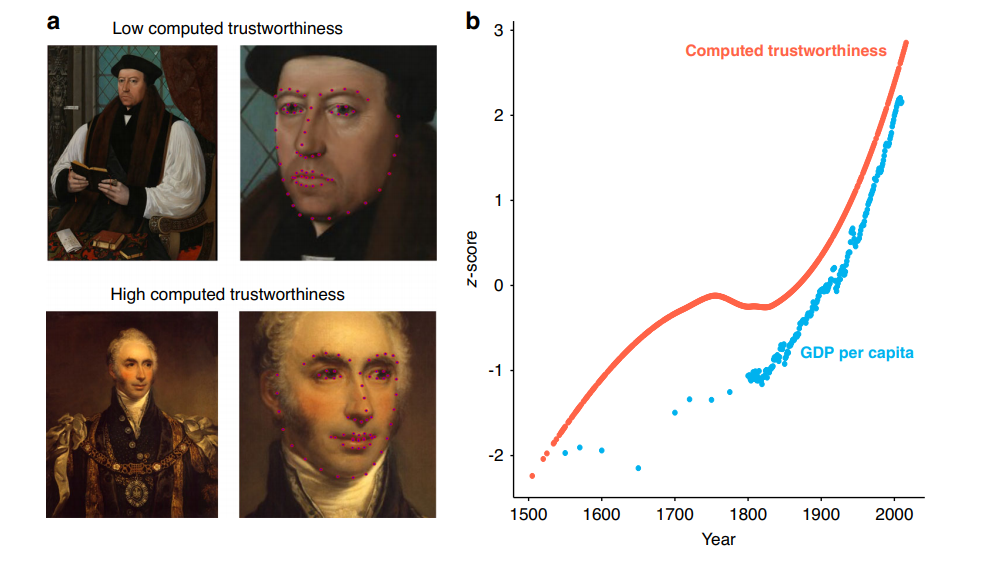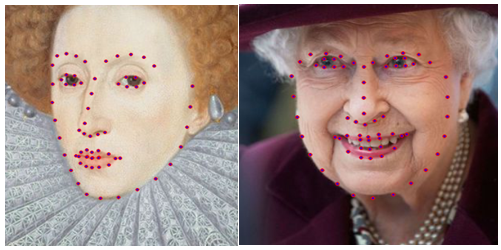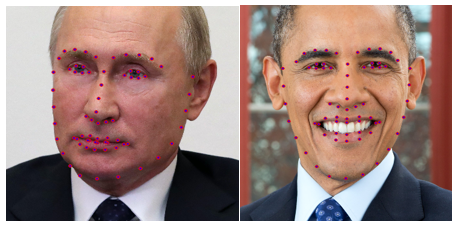
All civilizations are predicated on trust. When hailing a cab, we trust that the driver has a license and will take us to the destination with a minimum risk of suffering an accident. When ordering food, we trust that it was prepared in safe and hygienic conditions.
At least some degree of trust in strangers is required for basic cooperation, otherwise, we’d have serious problems in society. When social trust is high, the economy tends to perform better and crime tends to be lower.
Of course, trust isn’t handed out like candy. People judge a person’s trustworthiness based on their reputation and history of past behavior. But, many times, we award trust based on superficial signals such as a person’s face. Previous research found that faces that look happy even when not smiling and those that have feminine and baby-like features tend to be trusted more.
In a new study published today in the journal Nature Communications, researchers led by Nicolas Baumard, Research Director at the CNRS and Professor at the Ecole Normale Supérieure in Paris, found that they could track social trust across history by studying old paintings.
Do people’s faces reflect social trust?
Baurmard and colleagues designed a machine learning algorithm that evaluated trustworthiness and perceived dominance in a collection of 1,962 English portraits from the National Portrait Gallery in London, which were painted between 1506 and 2016.
The algorithm was initially validated by real humans who rated photos of people’s faces for trustworthiness. Later tests showed that the algorithm reproduced the results of previous studies that evaluated trustworthiness based on factors such as age, gender, and expressed emotions.
The study’s main conclusions were twofold.
“First, there is a methodological finding, namely that the methods and results of cognitive science can be used to retrieve the preferences of populations in the past. Second, there is a historical finding, namely that social trust, a very important aspect of social life and an important determinant of economic growth and democracy, has increased since the end of the Medieval period,” Baumard told ZME Science in an email.
The algorithm evaluated trustworthiness by analyzing muscle contractions (facial action units) and microexpressions featured in the historical portraits.
“Unlike real people, it is not influenced by historical cues not relevant to trustworthiness (such as the sitter’s outfit or the painting style) that may have biased their evaluations so that older portraits would have been perceived as less trustworthy,” Baumard said.
According to the findings, facial displays that convey trustworthiness improved between 1500 and 2000, which is associated with improvements in living standards over the period.
“Trust can be construed as an investment in social interactions with potential benefits (in the event of cooperation) and also potential losses (in the event of defection). Because losses have more dramatic effects for poorer individuals, individuals with lower resources are arguably more exposed by exploitation risks and should therefore have lower levels of social trust. In line with this reasoning, international surveys show a strong association between resources and social trust. Moving beyond correlations, economists have recently demonstrated that childhood resources had a causal impact on adult trust levels using exogenous variations in caloric rationing in post-WW2 Germany,” Baumard said.
“This is particularly relevant in light of the fact that the Middle Ages and the early Modern Period were periods of prolonged economic growth for Europe in general and England in particular. We thus tested whether higher GDP per capita was associated with the rise of trustworthiness in portraits. Our analysis of the National Portraits Gallery database revealed an association between higher levels of affluence and higher levels of trustworthiness displays between the 16th and the 21st centuries,” the researcher added.



The findings were replicated with another set of 4,106 portraits from the Web Gallery of Art, which spanned works of art showing personalities from 19 Western European countries from 1360 to 1918. The algorithm was also applied to contemporary faces, in a dataset of 2,277 selfies on social media from six cities. Trustworthiness was positively correlated with selfies from cities that ranked higher on measures of interpersonal trust and cooperation.
It goes without saying that a person’s face cannot be a reliable predictor of their personality traits. However, if these new findings are any indication, they suggest that economic development — and to a lesser degree more rights and freedoms — enhance social trust, which may very well be reflected in people’s faces.
“This is important because it could help to understand the roots of our modern culture. Why did democracy emerge? Why have we become more tolerant? People often think it is because of great men, because of philosophers, but our study suggests that the rise of trust is a massive phenomenon, detectable in thousands of portraits of strangers, and that its origin is more mundane, and can be found in the rise of the standard of living, just like today,” Baurmard said.
In the future, the researchers would like to employ a similar approach to other cultural and historical settings, such as busts of Roman emperors and Japanese paintings.



